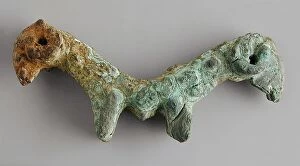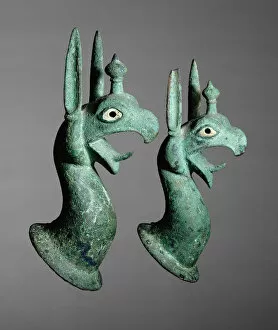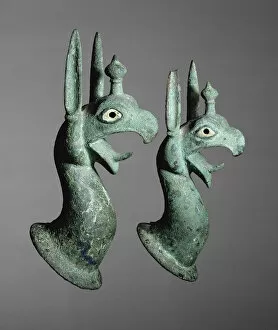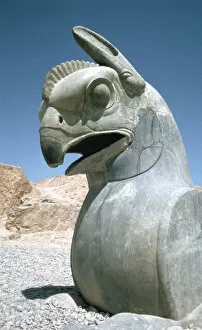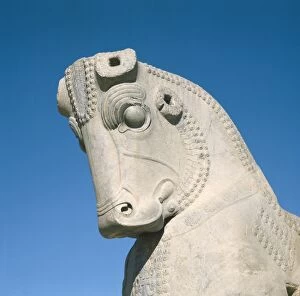Protome Collection
"Unveiling the Majestic World of Protome
For sale as Licensed Images
Choose your image, Select your licence and Download the media
"Unveiling the Majestic World of Protome: A Glimpse into Ancient Art and Mythology" Step back in time to the grandeur of ancient civilizations as we explore the captivating realm of protomes. These remarkable sculptures, often depicting mythical creatures or animal heads, offer a window into the artistic prowess and cultural significance of bygone eras. One such marvel is found within the Palace of Darius I at Apadana, where an awe-inspiring Audience Hall stands as a testament to Persian opulence from the 6th century. Adorned with intricate lion protomes, these majestic figures were likely crafted for thrones that symbolized power and authority. Traveling further through history, we encounter a pair of protomes showcasing the forepart of griffins dating back to 625-575 BCE. With their fierce expressions and meticulous detailing, these mythical beasts embody strength and guardianship. Delving deeper into craftsmanship, we discover bone carvings featuring lion heads with glass inlaid eyes. The exquisite attention to detail on these couch details transports us to an era where even furniture was adorned with artistry. The allure continues with a mesmerizing lion's head protome from the 1st century AD. Crafted using bone and glass materials, this sculpture exemplifies both skillful artistry and technological advancements in ancient times. Venturing beyond lions, vessels terminating in fantastic leonine creatures captivate our imagination. Dating back centuries ago, these artifacts showcase creativity intertwined with mythological symbolism. Not limited to land-dwelling animals alone, rams' heads also find their place among these extraordinary creations. Originating from Osuna (Urso), Spain during Roman civilization between the 1st and 2nd centuries BC. , they serve as reminders of human fascination with nature's diverse wonders.

